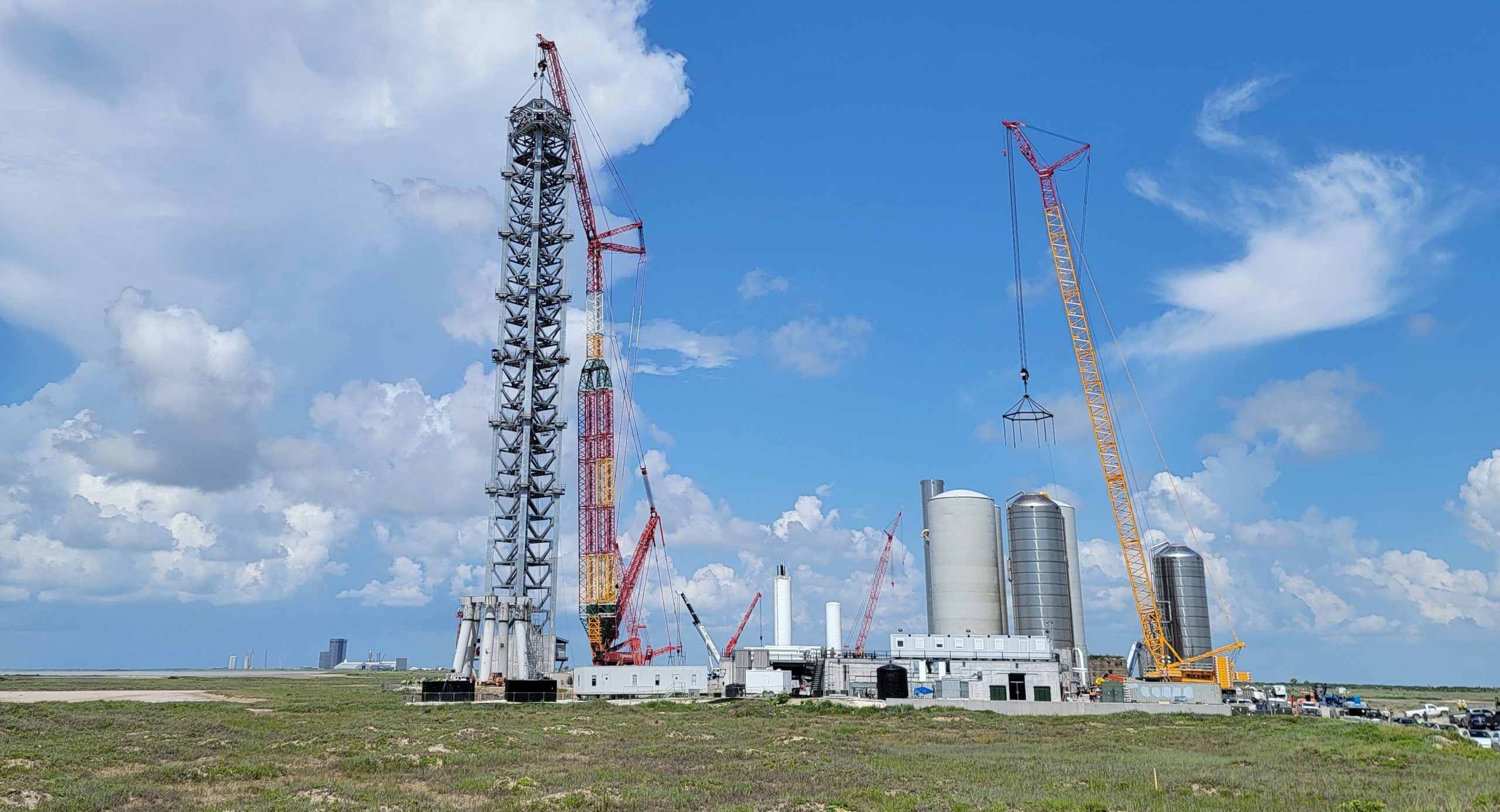
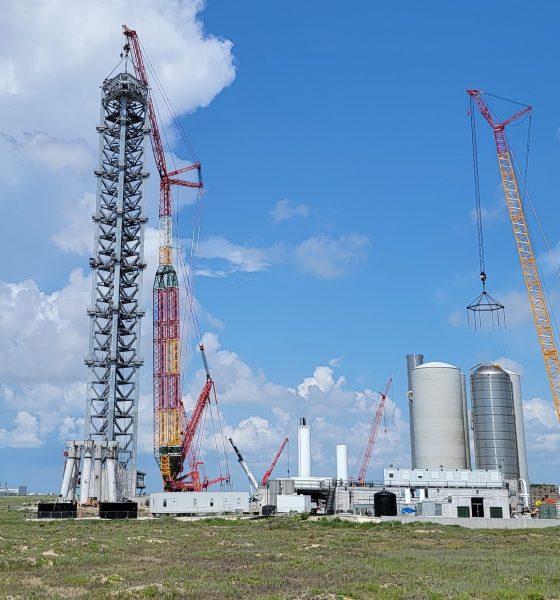
News
SpaceX preparing giant crane to assemble Starship’s first Florida launch tower
SpaceX has begun staging and assembling parts of a giant crane it will soon need to stack Starship’s first East Coast launch tower and install other major launch pad components.
The presence of the base of that crane at SpaceX’s NASA Kennedy Space Center (KSC) Launch Complex 39A was visually confirmed by NASASpaceflight.com photographers during a weekly aerial tour of the area on June 3rd. Four days later, Teslarati photographer Richard Angle observed more major crane components on their way to Pad 39A, including the crane’s cabin.
More likely than not, the crane SpaceX or its contractor has begun assembling at 39A is a Liebherr LR 11350, the same kind of crane the company used to assemble Starship’s first orbital launch site and tower in South Texas. In fact, given how few LR 11350s there are in existence, it’s entirely possible that it’s the exact same crane. Assembly of that crane began around April 2021 and took a month and a half, at which point it was finally ready to lift an extended boom long enough to assemble a tower almost 500 feet (~150 meters) tall.
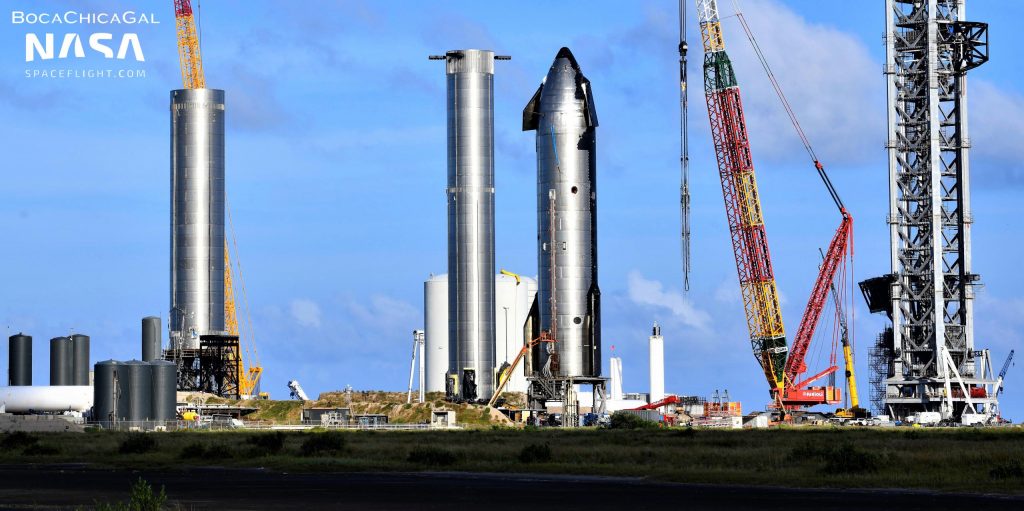
Pad 39A’s Starship launch tower is expected to be very similar to Starbase’s, although it will undoubtedly carry over numerous design changes thanks to lessons learned while building and outfitting the first tower. In fact, SpaceX has already assembled five of the nine individual sections that will eventually be stacked to form that tower, and one such change is already obvious. Instead of stacking each tower section as soon as its barebones framework is complete, SpaceX is taking a more methodical approach to its second launch tower. In an apparent attempt to limit the amount of work that needs to be done at Pad 39A itself, each of those segments is being thoroughly outfitted with secondary structures (ladders, doors, walkways, frames, raceways, etc.) before stacking.
SpaceX may even pre-install most of the thousands of feet of plumbing needed to connect a Starship to ground systems located around 90 meters (~300 ft) below it. Once stacked, each section – including all those partial propellant and gas lines – will still need to be joined together, but that process should be far easier than fully installing all the systems the tower needs to do its job. Outfitting Starbase’s launch tower, for example, took SpaceX around half a year and, to some extent, is still ongoing 11 months after the final stack. That likely explains why Starship’s 39A tower section assembly appears to be taking more time. With any luck, partially combining the outfitting and section assembly stages will significantly expedite final assembly, as far less work will need to be done at extreme heights or require a skyscraper-sized crane.
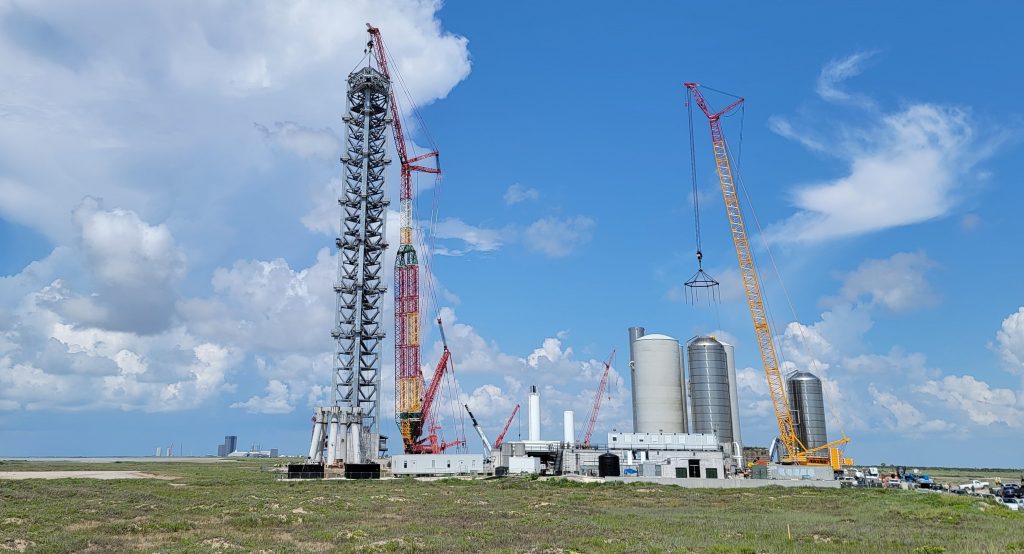
Through Starbase, SpaceX has already demonstrated the ability to stack a Starship launch tower from its unoccupied concrete base to its final height of ~145 meters (~475 ft) in about two months flat. While SpaceX will have to slalom its way around Pad 39A’s busy launch manifest, there’s no reason to believe that Starship’s first Florida launch tower won’t be stacked at least as quickly.
Aside from the arrival of crane parts, SpaceX has also made great progress on the Starship launch site itself. In the last few weeks, the company appears to have completed several significant concrete pours on the tower base. SpaceX has also installed all six of the pedestal-like orbital launch mount’s legs after months of foundation work. Elsewhere at Cape Canaveral, a different team has made excellent progress assembling the massive donut-like platform that will sit on top of those legs. Due to its extreme weight (possibly around 300 metric tons, per Elon Musk’s comments on the Starbase mount), the same LR 11350 crane will also be needed for that major installation milestone.
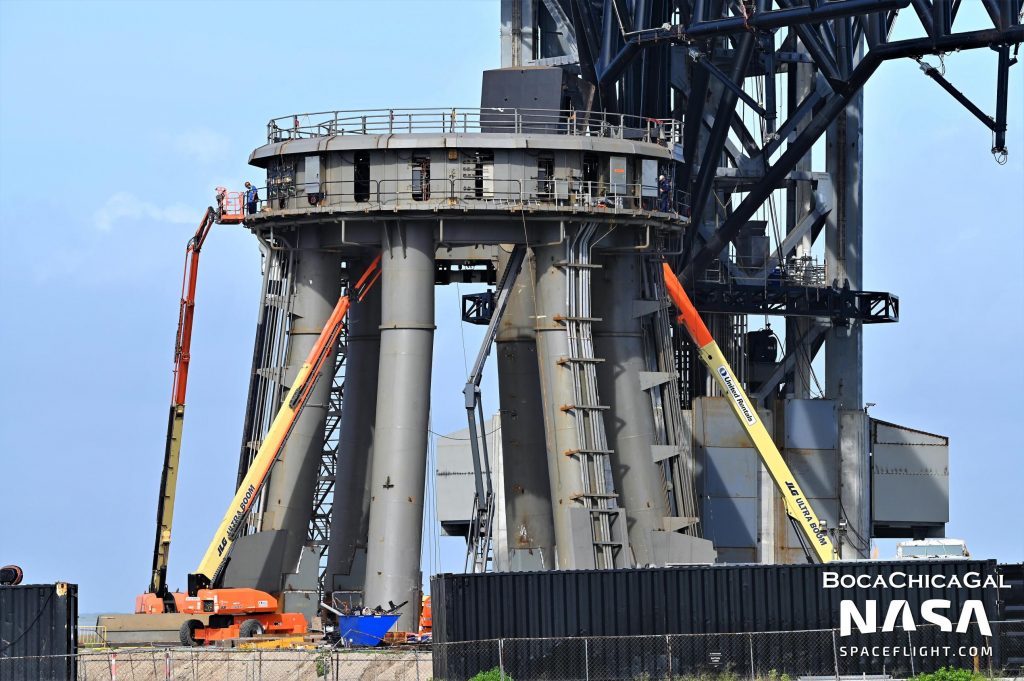
Plenty of parts are still missing, of course. Four tower sections still need to be assembled. Starship’s first Florida launch tower will need its own set of two ‘chopstick’ arms for lifting and (maybe) catching Starship and Super Heavy, as well as a third swinging quick-disconnect arm to connect Starship to ground systems. Aside from delivering several new tanks, SpaceX has also made no apparent progress on adding a massive methane propellant farm to Pad 39A, and it’s possible that the pad’s oxygen farm will also need to be expanded. Propellant storage has proven to be a major headache for SpaceX at Starbase.
Nonetheless, SpaceX is making great progress on most of the most difficult parts of Starship’s first Florida launch site, and there’s a good chance that just like its launch mount, work on the pad’s tower arms is already underway somewhere offsite. A great deal of work remains to be done but SpaceX is still well on its way to launching Starships out of Kennedy Space Center in the not-too-distant future.

News
Tesla 2025 Holiday Update: Here’s what it includes, and what it’s missing
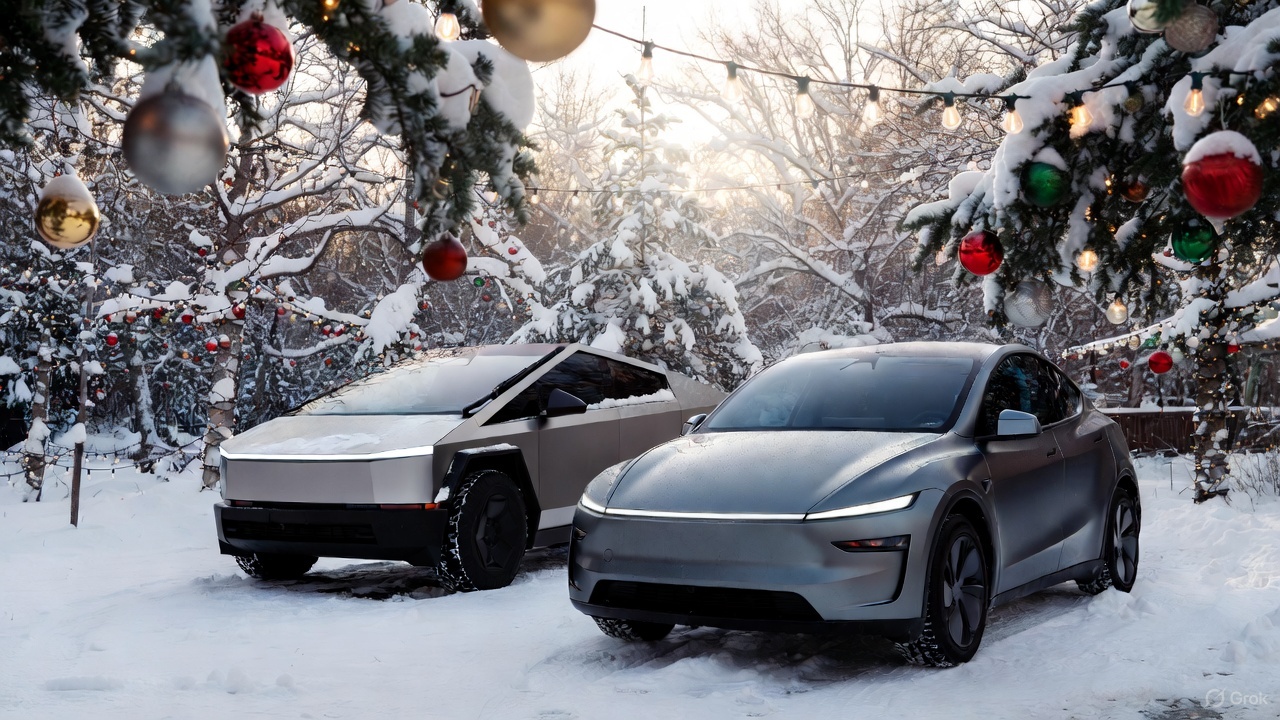
Tesla has finally announced the features for the 2025 Holiday Update, which includes a wide variety of new inclusions that are both functional and just for fun.
The new features are plentiful, but there were a handful of things we were expecting to see based on what we know. We don’t want to sound ungrateful, because there are a lot of great new things on the way with this update.
Here’s what was included:
Grok with Navigation Commands (Beta)
Grok will now have the ability to add and edit navigation destinations, which is a drastic improvement considering Tesla owners had to use their standard voice commands for this in the past.

The utilization of Grok will likely improve the navigation experience by offering some insight into your destination, including reviews and other points of interest nearby.
It will be enabled by using Grok’s “Assistant” personality.
Tesla Photobooth
“Turn your car into a photobooth! Take selfies from inside your Tesla & give yourself a makeover with fun filters, stickers, and emojis. Share with others right from the Tesla app.”
This feature will be available within the Toybox.
Dog Mode Live Activity
When using Dog Mode to keep your four-legged friend comfortable in the car, you’ll now be able to check in on them as it will share periodic snapshots of the cabin, along with live updates on temperature, battery, and climate conditions.
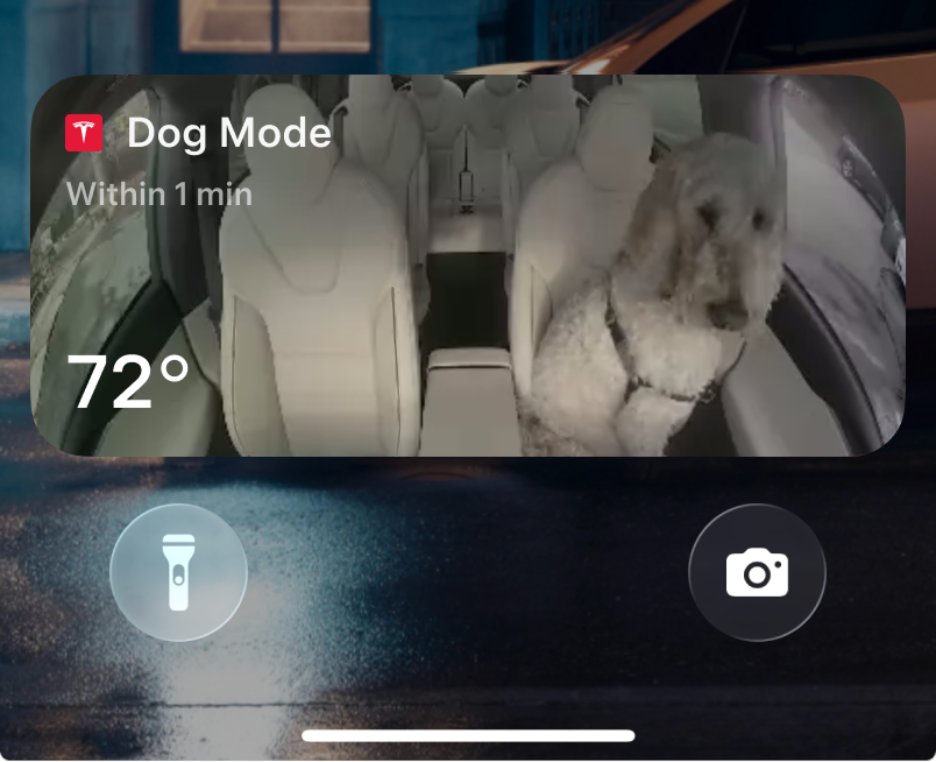
Dashcam Viewer Update
Dashcam clips are awesome, but they’re void of a lot of information, which could be useful in some instances, especially if there is an accident.
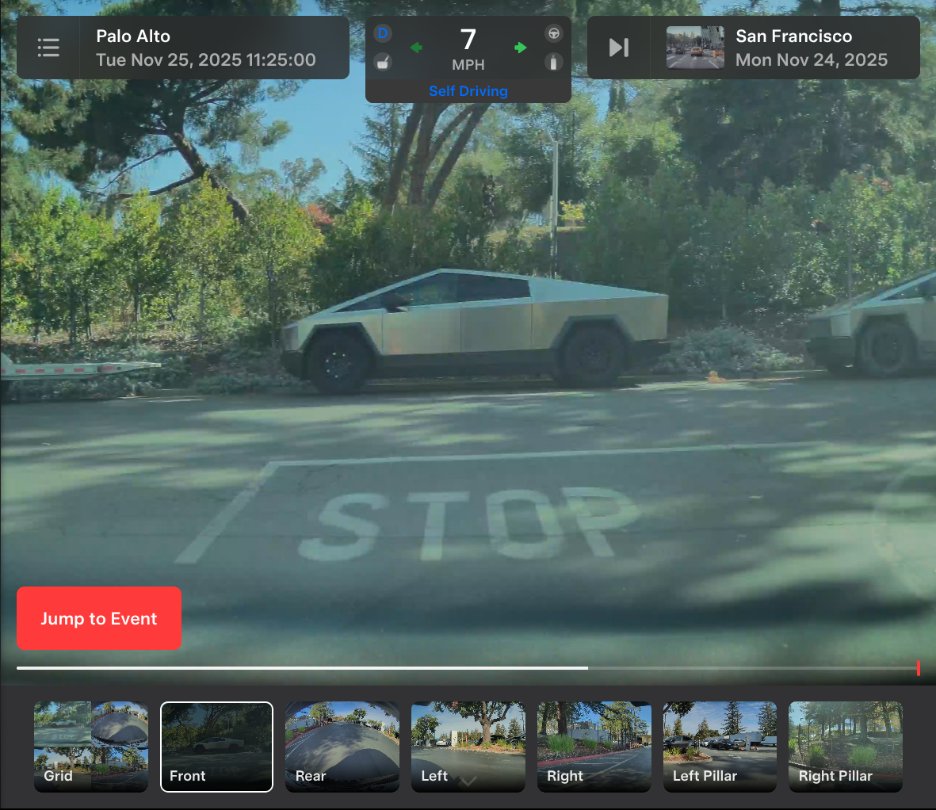
Now, there will be additional details included on each Dashcam clip, like speed, steering wheel angle, and Self-Driving state.
Santa Mode
New graphics, trees, and a lock chime are now available.
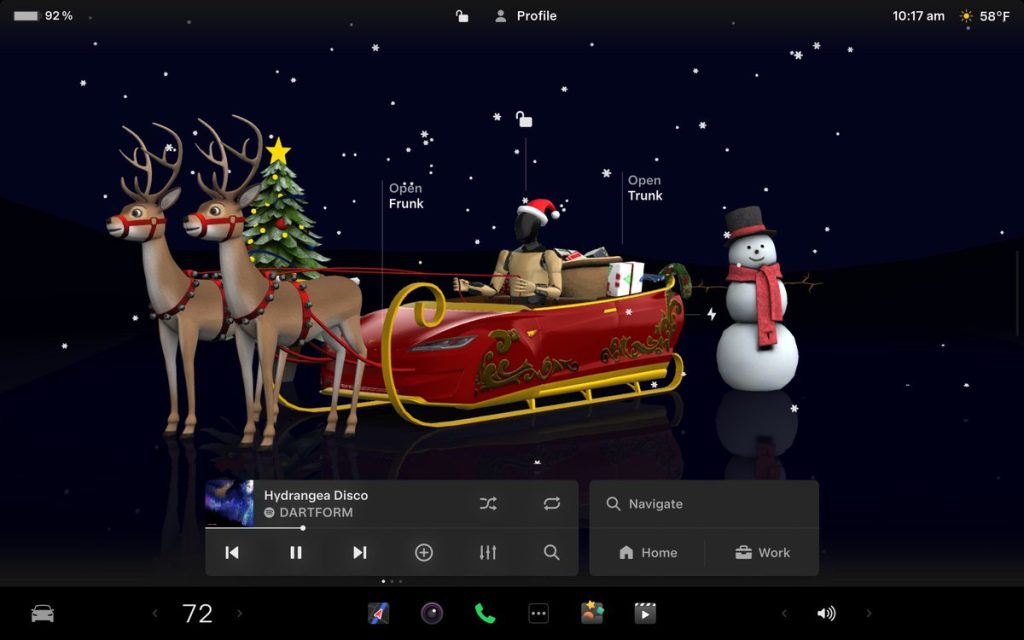
Light Show Update
A new Light Show, called Jingle Rush, will be available.
Custom Wraps and License Plates in Colorizer
Colorizer will now be known as “Paint Shop” in the Toybox. You will now be able to personalize your Tesla Avatar with window tints, custom wraps, and license plates. Preloaded designs will be available, but owners will be able to use their USB Flash Drives to create one that suits their style.
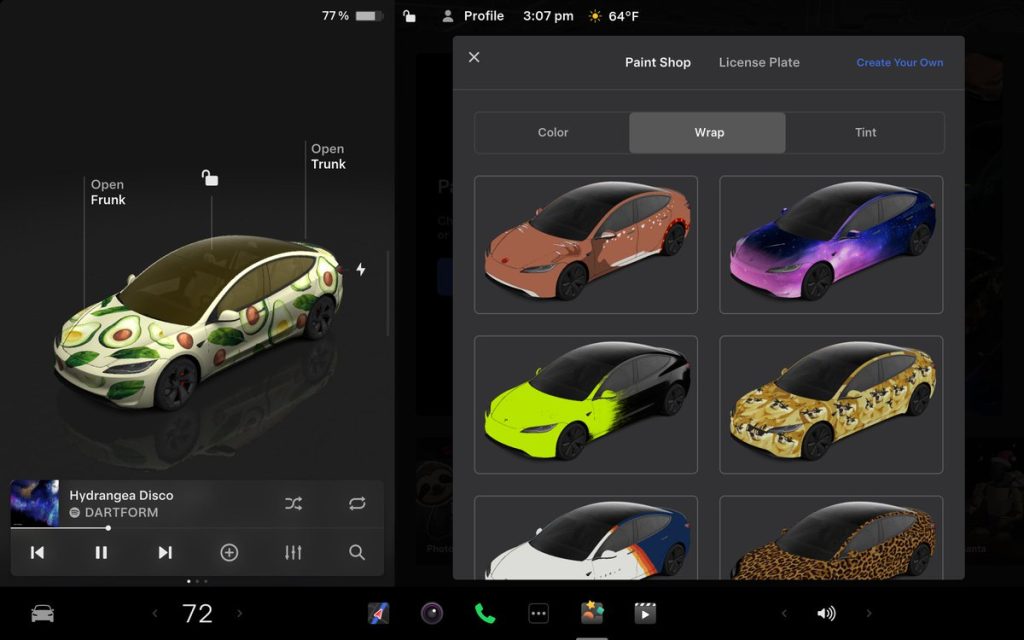
Navigation Improvements
Changing the order of your destinations will be easier through a new “Favorites” tab, and Home and Work can now be set by dropping a pin.
There will also be “Suggested Destinations,” which will be determined through recent trips and habits while parked.
Supercharger Site Map
Perhaps the most significant feature of the Holiday Update, Tesla is adding a 3D view of select Tesla Superchargers by tapping “View Site Map.”
When navigating to a location with this capability, the site layout, live occupancy, and nearby amenities will be available. Drivers will also be able to choose which stall to Supercharge.
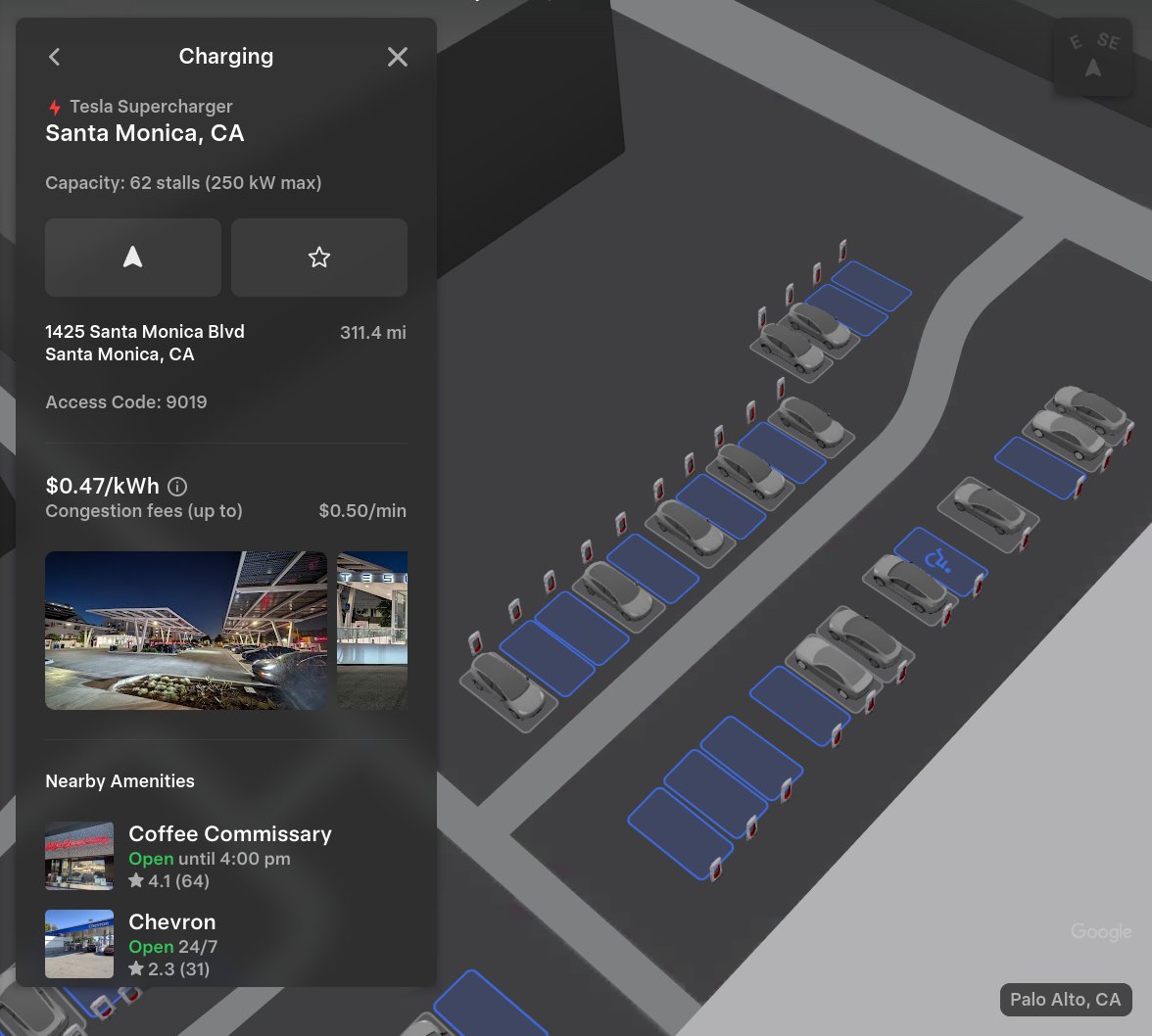
This is only available at a handful of locations currently, but it will expand to more Superchargers as it becomes more robust.
Automatic Carpool Lane Routing
Navigation will include an option to utilize carpool lanes. Your route will automatically choose the carpool lane when eligible.
Phone Left Behind Chime
If the in-car occupant detection system does not see anyone in the car and there is a phone key, or if a phone is left inside the cabin, your Tesla will chime a few seconds after the doors close.
Charge Limit Per Location
You can now save a charge limit for the current location while parked and it will be applied automatically the next time you charge there.
ISS Docking Simulator
In a SpaceX collaboration, Tesla has added this game to its in-car Arcade:
“Become an astronaut and prove your skills by docking with the International Space Station. Control & guide the rocket in this 3D docking simulator game using a set of controls based on actual interfaces used by NASA astronauts.”
Additional Improvements
-
Enable or disable wireless phone charging pads in Controls > Charging (S3XY) or Controls > Outlets & Mods (Cybertruck)
-
Add Spotify tracks to your queue right from the search screen & scroll through large Spotify playlists, albums, podcasts, audiobooks & your library seamlessly, without paging
-
Take the vibes up another level with rainbow colors during Rave Cave. Accent lights color will change along with the beats of your music. App Launcher > Toybox > Light Sync
-
Lock Sound now includes Light Cycle from Tron Mode. Toybox > Boombox > Lock Sound
What’s Missing
There are a handful of features we expected to see with the Holiday Update, but were not included.
Banish Feature
Tesla has been teasing the Banish functionality for quite a few years, but evidently, it is not quite there yet.
Banish will allow owners to get out of their vehicle at the entrance of their destination, and the car will go find a spot and park itself. Some refer to it as “Reverse Summon.”
Apple CarPlay
With all of the rumors regarding Apple CarPlay and then the evidence that Tesla was working to bring CarPlay to vehicles, we really expected it to come with the Holiday Update.
We’re not upset it’s not here, though. Tesla’s in-car UI is significantly better, at least in our opinion.
Parking Spot Selection
One of the biggest gripes about the new Arrival Features with Full Self-Driving v14 is that choosing a set parking spot is not available. This is especially frustrating for Tesla owners who rent or live in townhouse neighborhoods or apartment complexes with assigned parking.
Tesla seems to be working on this based on the release notes for v14.2, where it said future capabilities would include Parking Spot Selection.
News
Man credits Grok AI with saving his life after ER missed near-ruptured appendix
The AI flagged some of the man’s symptoms and urged him to return to the ER immediately and demand a CT scan.

A 49-year-old man has stated that xAI’s Grok ended up saving his life when the large language model identified a near-ruptured appendix that his first ER visit dismissed as acid reflux.
After being sent home from the ER, the man asked Grok to analyze his symptoms. The AI flagged some of the man’s symptoms and urged him to return immediately and demand a CT scan. The scan confirmed that something far worse than acid reflux was indeed going on.
Grok spotted what a doctor missed
In a post on Reddit, u/Tykjen noted that for 24 hours straight, he had a constant “razor-blade-level” abdominal pain that forced him into a fetal position. He had no fever or visible signs. He went to the ER, where a doctor pressed his soft belly, prescribed acid blockers, and sent him home.
The acid blockers didn’t work, and the man’s pain remained intense. He then decided to open a year-long chat he had with Grok and listed every detail that he was experiencing. The AI responded quickly. “Grok immediately flagged perforated ulcer or atypical appendicitis, told me the exact red-flag pattern I was describing, and basically said “go back right now and ask for a CT,” the man wrote in his post.
He copied Grok’s reasoning, returned to the ER, and insisted on the scan. The CT scan ultimately showed an inflamed appendix on the verge of rupture. Six hours later, the appendix was out. The man said the pain has completely vanished, and he woke up laughing under anesthesia. He was discharged the next day.
How a late-night conversation with Grok got me to demand the CT scan that saved my life from a ruptured appendix (December 2025)
byu/Tykjen ingrok
AI doctors could very well be welcomed
In the replies to his Reddit post, u/Tykjen further explained that he specifically avoided telling doctors that Grok, an AI, suggested he get a CT scan. “I did not tell them on the second visit that Grok recommended the CT scan. I had to lie. I told them my sister who’s a nurse told me to ask for the scan,” the man wrote.
One commenter noted that the use of AI in medicine will likely be welcomed, stating that “If AI could take doctors’ jobs one day, I will be happy. Doctors just don’t care anymore. It’s all a paycheck.” The Redditor replied with, “Sadly yes. That is what it felt like after the first visit. And the following night could have been my last.”
Elon Musk has been very optimistic about the potential of robots like Tesla Optimus in the medical field. Provided that they are able to achieve human-level articulation in their hands, and Tesla is able to bring down their cost through mass manufacturing, the era of AI-powered medical care could very well be closer than expected.
News
Tesla expands Model 3 lineup in Europe with most affordable variant yet
The Model 3 Standard still delivers more than 300 miles of range, potentially making it an attractive option for budget-conscious buyers.

Tesla has introduced a lower-priced Model 3 variant in Europe, expanding the lineup just two months after the vehicle’s U.S. debut. The Model 3 Standard still delivers more than 300 miles (480 km) of range, potentially making it an attractive option for budget-conscious buyers.
Tesla’s pricing strategy
The Model 3 Standard arrives as Tesla contends with declining registrations in several countries across Europe, where sales have not fully offset shifting consumer preferences. Many buyers have turned to options such as Volkswagen’s ID.3 and BYD’s Atto 3, both of which have benefited from aggressive pricing.
By removing select premium finishes and features, Tesla positioned the new Model 3 Standard as an “ultra-low cost of ownership” option of its all-electric sedan. Pricing comes in at €37,970 in Germany, NOK 330,056 in Norway, and SEK 449,990 in Sweden, depending on market. This places the Model 3 Standard well below the “premium” Model 3 trim, which starts at €45,970 in Germany.
Deliveries for the Standard model are expected to begin in the first quarter of 2026, giving Tesla an entry-level foothold in a segment that’s increasingly defined by sub-€40,000 offerings.
Tesla’s affordable vehicle push
The low-cost Model 3 follows October’s launch of a similarly positioned Model Y variant, signaling a broader shift in Tesla’s product strategy. While CEO Elon Musk has moved the company toward AI-driven initiatives such as robotaxis and humanoid robots, lower-priced vehicles remain necessary to support the company’s revenue in the near term.
Reports have indicated that Tesla previously abandoned plans for an all-new $25,000 EV, with the company opting to create cheaper versions of existing platforms instead. Analysts have flagged possible cannibalization of higher-margin models, but the move aims to counter an influx of aggressively priced entrants from China and Europe, many of which sell below $30,000. With the new Model 3 Standard, Tesla is reinforcing its volume strategy in Europe’s increasingly competitive EV landscape.








